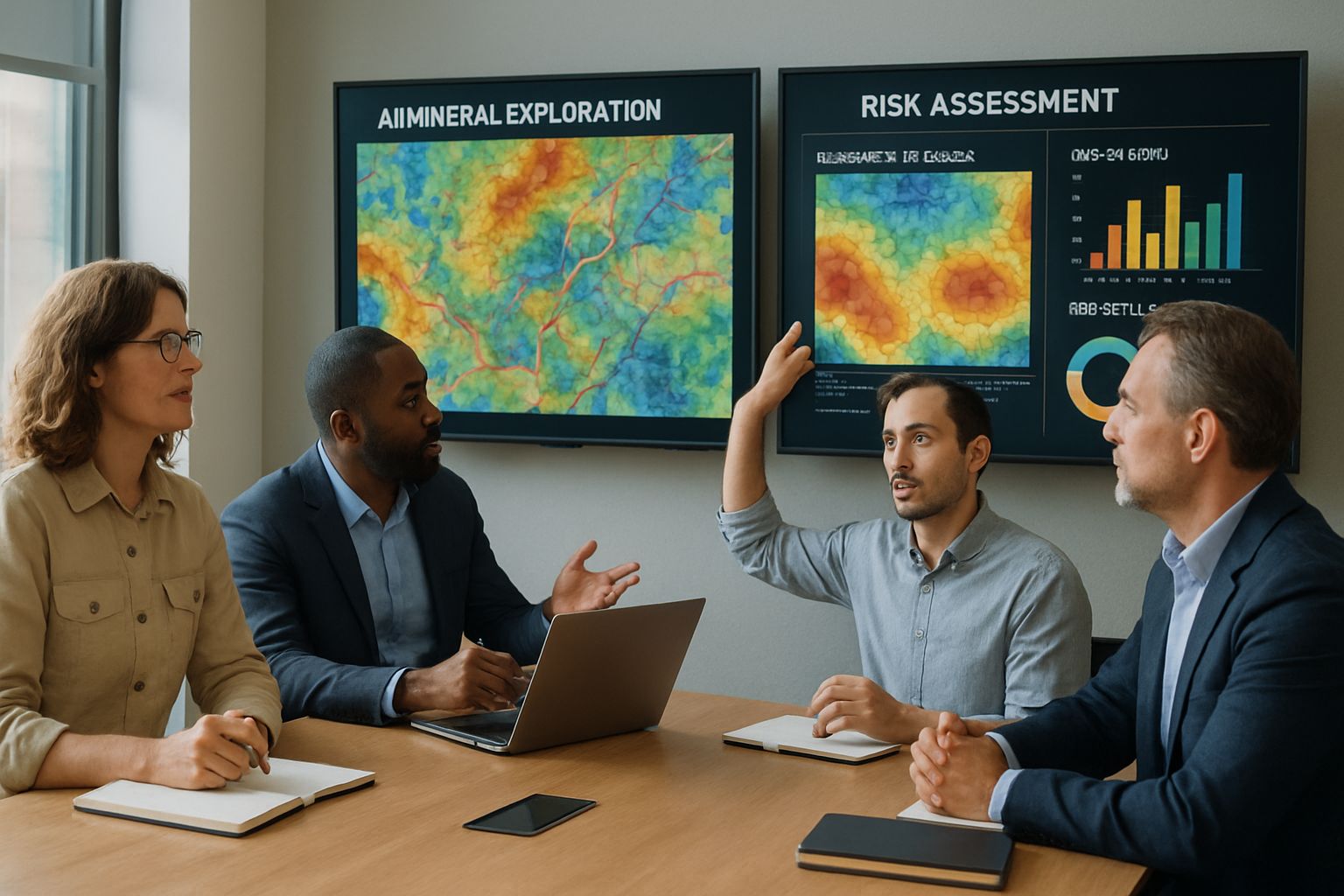
AI CERTS
2 days ago
Funding and Risks in AI Mineral Exploration
Furthermore, academic groups are proposing uncertainty-aware workflows to reduce costly dry holes. This article examines capital flows, performance wins, edge-case failures, and mitigation strategies shaping the next phase. Professionals will also find certification resources to strengthen competencies in this rapidly evolving field.
Funding Fuels Rapid Adoption
Venture and corporate investors poured unprecedented capital into exploration tech during 2024-2025. Consequently, KoBold Metals secured a US$537 million Series C to advance its Zambian copper project. Moreover, GeologicAI attracted US$44 million for its sensor-fusion core scanners and real-time analytics. These deals signal confidence that AI mineral exploration can shorten timelines between concept and orebody.

- US$29.9 billion 2024 market size for AI in mining.
- 40 % of KoBold’s new capital earmarked for project development.
- Series B participation from BHP Ventures and Rio Tinto.
Heavy funding illustrates market momentum. However, performance validation still trails investor optimism.
Market Growth Metrics Overview
Analysts link rising metal prices to the adoption of AI mineral exploration platforms. Consequently, suppliers race to meet demand for cloud computing and data acquisition hardware.
These metrics confirm strong financial tailwinds. Nevertheless, technical challenges demand equal attention, leading us to the next section.
Edge Cases Expose Risks
However, impressive headlines mask persistent failure modes in AI mineral exploration. Domain shift remains the most cited cause of mispredicted targets. In contrast, label noise can create phantom anomalies on prospectivity maps. Therefore, dry holes still occur, costing millions and delaying resource discovery.
Anatomy Of Failure Modes
Researchers at Mila and Stanford compared multiple geoscience AI pipelines across Canadian greenstone belts. They observed confident zero-copper predictions when lithologies differed from training data. Meanwhile, modeling limitations emerged when sparse positive samples encouraged overfitting to remote sensing artefacts. Consequently, vendors now log epistemic and aleatoric uncertainty alongside scores. Nevertheless, teams still over-trust AI mineral exploration outputs when time pressure intensifies.
These challenges highlight critical gaps. However, emerging solutions are transforming the market landscape.
Emerging Technical Mitigation Strategies
Industry and academia are converging on multi-pronged solutions. Firstly, ensemble prospectivity maps quantify spread and highlight disagreement zones. Additionally, Bayesian drill planning prioritizes holes that shrink epistemic uncertainty. These practices raise confidence in AI mineral exploration while limiting unexpected dry holes.
Data diversification also expands training coverage across basins. Moreover, on-site sensor fusion feeds continuous retraining loops for geoscience AI. Therefore, models adapt when new lithologies appear. Nevertheless, clear processes must capture domain shifts before predictions become brittle.
Active Learning Advances Detailed
Active learning is gaining traction inside drill program control rooms. Subsequently, algorithms rank candidate holes by expected information gain, not just probability of ore. This focus accelerates resource discovery while reducing wasted metres. However, modeling limitations still arise if operators ignore uncertainty intervals. Consequently, integrating uncertainty dashboards into AI mineral exploration interfaces keeps decision makers alert.
Mitigation practices improve reliability. Consequently, governance considerations move to the forefront.
Governance And Market Outlook
Transparency and human oversight remain essential. Consequently, several majors commission independent audits of AI mineral exploration workflows. Auditors benchmark model performance on held-out regions and publish error distributions. Meanwhile, regulators debate whether technical reports should disclose algorithm parameters. Well-documented AI mineral exploration policies will likely become part of future listing requirements.
Professionals seeking to lead these audits can validate expertise through the AI+ Quantum™ certification. Moreover, certification holders learn to evaluate geoscience AI pipelines, quantify modeling limitations, and communicate uncertainty. Therefore, teams gain structured controls before approving multi-million-dollar drill budgets.
Market forecasts still diverge. Grand View Research projects hundreds of billions in value by 2030. In contrast, conservative analysts expect slower uptake until more resource discovery success stories emerge. Regardless, investors show sustained appetite.
Robust governance will decide winners. Consequently, certified professionals sit at the center of that shift.
AI mineral exploration already reshapes capital allocation and operational workflows. Nevertheless, domain shift, label noise, and other modeling limitations threaten credibility. However, ensembles, active learning, and transparent audits strengthen trust. Additionally, continuous data diversification keeps geoscience AI responsive to novel geology. Consequently, discovery hit rates should improve, accelerating resource discovery in critical metals. Professionals can future-proof careers by earning the AI+ Quantum™ certification and staying informed. Act now to master the tools, safeguard projects, and lead responsible innovation.



